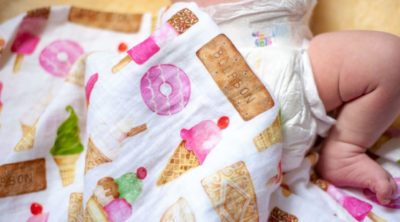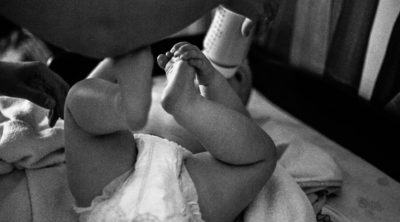
Childhood and toys are almost inseparable. The physical and mental development of a child depends on the right choice of toys, to a certain extent. This article provides some guidelines for parents to choose the right toys for their kids.
Childhood is that stage of life, where you get fascinated with almost everything under the Sun. Right from their birth, children are curious about everything, and have an inborn tendency to explore and learn. Toys play a key role in this process of learning and development.
In simple terms, a toy can be defined as something to be played with. It can be anything – a household item, like a kitchen container or a set of building blocks. Toys that help a child to learn about a particular subject or to develop a particular skill, are known as educational toys. Such toys should be selected carefully, according to the age of the child. As children are curious about learning new things, any toy or game is a learning experience for them. You can tap this natural curiosity, and contribute to their knowledge in a better way, through educational toys.
Zero to Six Months
For a newborn, after spending nine months in the mother’s womb, everything is new. It may sound absurd, if you talk about educational toys for a newborn, but toys constitute a great medium through which you can make the newborns familiar with their surroundings. At this stage, the primary role of toys is to help the babies develop their senses and reflexes.
It takes at least two months for newborns to get adjusted to their surroundings. They learn through their senses of hearing, sight, taste, and touch. You can stimulate these senses using the right educational toys. A newborn baby has blurry vision and can recognize things within a distance of 10 to 12 inches. So while selecting toys for this age group, you should go for colorful ones. Crib mobiles with soothing music, crib music boxes, soft toys, and safety mirrors are some good options. Crib mobiles help the movement of eyes, which in turn strengthens eye muscles; music enhances listening skills, and soft toys or dolls help the newborns to recognize faces.
As a baby enters his second month, he starts kicking his legs and waving his arms. So floor gyms with hanging parts, light, and music, prove more appealing for them. It helps to develop motor skills, as the babies reach for the hanging toys. During the third and fourth months, babies attempt to grasp objects. So they need rattles and toys that make sounds. During the fifth month, you can select toys, which a baby can hold with his hands. Bat-at toys, squeeze toys, musical toys, and teething rings, help to enhance hand-eye coordination. During the sixth month, babies need toys that encourage them to crawl. Colored balls and action-reaction toys will be perfect for this age.
Six to Twelve Months
A baby starts crawling and takes efforts to sit straight during the seventh and eighth month. The thinking ability of a baby starts developing around the eighth month. Toys, like building blocks, sorting toys, bath toys, and interlocking rings, are good at this stage. During the eighth month, go for toys which enhance confidence and strength of the baby, as he may try to stand up, holding the furniture. Ninth and tenth months witness more physical activity, with the baby trying to walk. Walkers, link-together toys, play-telephones, and language development toys, are excellent. You may also introduce outdoor toys, like swings, during this period. Try some push-pull toys, ride-on toys, simple musical instruments, pop-up toys, and balls; and see the happiness on your child’s face, as he plays and learns.
One to Five Years
Almost all babies start walking between their twelfth and fifteenth month. During this period, they utter their first words, generally associated with food, parents, or pets. Educational toys in this period, should aim at helping them develop these skills. As they enter their second year, you can introduce more toys of that kind, to enhance their vocabulary and creative skills. Get them books with pictures, crayons and play dough, during this period. You can also choose soft alphabet blocks, stacking rings, solid letters, and large balls.
A two-year-old can walk, jump and hop; has a good hand-to-eye coordination, and tries to speak full sentences. At this age, kids tend to observe and imitate the speech and mannerisms of elders around them. So it is advisable to get them sporty toys, role-play toys, water toys, wagons, dolls, stuffed animals, and child-sized tables and chairs. You can also introduce educational toys, which help in counting. As a child enters his third year, he will want more sporty toys, simple board games, play sets, dolls with accessories, story books, picture books, realistic toys like animal sets, model cars and trains, and puzzles. Such learning toys help in preparing them for kindergarten.
During the fourth year, kids become proficient in almost everything expected from them at that age. They can walk well, carry their things, draw, write words, sing, dance, swim, and skate. Try to indulge them in more creative projects; and get them toys that can help them enhance their reading and writing skills. You can get them drawing toys, electronic games, board games, and simple musical instruments. These toys help them build self-confidence.
Above Five Years
Kids in this age group make friends and spend more time playing with their peer group. They are active in hiking, swimming, biking, and may have their own hobbies. They enjoy board games, art kits, science kits, art materials, marbles, larger bicycles, construction sets, backyard gym equipment, and kites. Between the ages of six and nine, you can go for science experiment kits, junior versions of adult sporting equipment, pogo sticks, jump ropes, magic sets, tabletop sports, and video games.
Kids in the age group of nine to twelve tend to develop skills and hobbies that usually last for their lifetime. Science kits, jigsaw puzzles, advanced construction sets, chess, playing cards, remote control vehicles, checkers, dominoes, and books are beneficial for them.
Things to Remember
- Choose appropriate educational toys for different age groups, considering your child’s abilities and interests.
- Always read the instructions before using the toy or game; and keep the product literature safely, for future reference.
- Toys for infants and toddlers should not have any sharp edges and small parts.
- Let the kids play under your supervision. Don’t allow the younger kids to use toys meant for the older ones.
- Keep these toys in a safe place, away from very young children. Check these toys at regular intervals for damage.
Playing helps children to develop their senses and motor skills. It also helps the kids in enhancing their creativity, thinking, problem solving skills, and language. So playing with educational toys means learning and mastering various skills. Every parent should try to choose suitable toys for their children. Apart from buying these toys, it is important to spend quality time with your kids. At times, you may have to sit with your children and explain to them, the working of a particular toy, help them solve a puzzle, or simply play with them. All these contribute to the overall development of your child, as your child is everything that matters to you.











